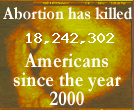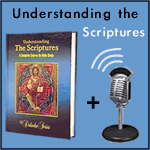Stephen Napier Ph.D.
National Catholic Bioethics Center
To read Part 2 in this series click here
When one peruses the secular literature on bioethics, one often comes across various “arguments” defending embryonic destructive research. The arguments coming up most often are (a) the twinning argument, (b) the dicephalic twin case (c) the brain transplant example, and (d) the embryo rescue case. I find none of these arguments persuasive. The National Catholic Bioethics Center has the practice of writing postings to educate and inform the faithful. This is a first in a series of postings addressing each of these arguments and pointing out their fatal flaws. This first part addresses the fatal flaws behind the embryo rescue case.
The embryo rescue case runs something like this: suppose an IVF clinic catches on fire. You have the choice to save a cryo-preserved embryo or a six-year old child. You only have time to save one. Which one do you choose? Most people would be inclined to save the child. Proponents of embryo destructive research then conclude that the embryo does not have the “moral status” or “moral worth” equal to that of a child, for otherwise we would not be so clearly inclined to save the child. Proponents further conclude that it is permissible then to destroy embryos for research purposes.
What just happened? Even those unfamiliar with philosophical discourse or with the professional study of logic will likely sense a “jump” in reasoning. Logicians call missing premises “enthymemes.” We can uncover the enthymeme in the embryo rescue argument by clarifying its premises and conclusions. The first premise is a statement of our intuitions on the rescue case:
1): Our intuitions tell us to save the child (all else being equal).
Now to get the conclusion that the embryo lacks the same moral worth as the child, we need to import the following premise:
2): If our intuitions tell us to save the child instead of the embryo, then the embryo lacks the same moral worth as the child.
From (1) and (2), it would follow that,
3): The embryo lacks the same moral worth as the child.
But the argument is not done yet. The end conclusion is that it is permissible to destroy the embryo for research purposes. And to get that conclusion, one needs to import yet another premise, according to which,
4): If an entity E (the embryo in this case) does not have equal moral status as another entity A (the child), then it is permissible to kill E for research purposes.
And once (4) is clearly articulated, the proponent of the embryo rescue argument can then draw the conclusion,
5): It is permissible to kill the embryo for research purposes.
Now this argument is ridiculously fallacious. At best, it would only be persuasive to someone already committed to a view of the embryo as lacking any natural right to life. Cashing in on this assessment though, requires some technical comment.
Let’s grant premise (1), since it is simply a statement of fact about our intuitions regarding whom we would save (all else being equal). Let us also grant the conclusions (3) and (5). That leaves (2) and (4) open to dispute. Let me focus on premise (2) for the moment. Premise (2) says, basically, that if our intuitions tell us to save x instead of y, then y does not have equal moral worth as x (x and y are variables or ‘stand-ins’ for different human beings). Now consider a counter-example. Suppose x in this case is an embryo that is yours. That is, suppose you and your spouse underwent an IVF procedure (just suppose) and the embryo you had the opportunity to save was your own. And next, suppose that instead of a child, you had the choice to save either your own embryo, or someone else’s embryo. It seems to me most of us would choose our own every time hoping to have an opportunity to implant the embryo and subsequently rear our own child. But given premise (2), your embryo has greater moral worth than the other embryo. But this is an odd result, for if moral worth means anything, it is at least a property of the embryo and not a property of your interests or desires. That is, we do not impute worth, but rather we recognize worth. Therefore, the moral worth of the two embryos should be equivalent since they are similar except for the fact that one is related to the rescuer and the other is not. It is certainly hard to see how this different relation affects the embryos’ intrinsic moral worth. So, our intuitions in this latter case tell us to save our own over someone else’s and yet both embryos are equivalent in terms of moral worth. But that is not what premise (2) says. Therefore, premise 2 is false. The lesson learned is that whom one chooses to save does not tell us anything about the moral worth of the person saved. This is no more apparent than in reasoning about pandemic-flu scenarios. Many state and hospital protocols concerning responses to a pandemic flu outbreak specify a triage or order of treatment preference. But no one would say that those citizens that end up further down the list lack moral worth. Therefore, premise (2) is not only false, but patently so.
What about premise (4)? Premise (4) highlights even more egregious errors than premise (2). Consider the burning building scenario again. We have the choice between saving the child or saving a frozen embryo. We have the intuition to save the child. Now why do we have this intuition? One plausible answer is that one has an obligation to prevent the unjust suffering of others – so long as there is not a corresponding grave threat on the rescuer’s life. Since death by fire is intensely painful, one has a grave obligation to save the child who is a sentient person capable of feeling the excruciating pain of being burnt. The more grave the unjust suffering, the more grave the obligation to prevent it. So of course we would choose to save the child, because the child can feel the pain of being burnt whereas the embryo cannot. Our obligations to save, then, attach to the child, not the embryo – all else being equal. However, having the obligation to prevent the unjust suffering of others, does not in any way entail that one does not have an obligation not to kill an embryo. Eliminating the triple negatives, it would be clearer to say that having an obligation to prevent the suffering of others does not entail that it is permissible to kill an embryo. Conversely, an obligation not to kill an embryo is certainly consistent with having an obligation to prevent the unjust suffering of others. A duty to prevent the suffering of x (which explains our intuitions outlined in (1)), does not say anything about whether it is permissible to kill y (which is the conclusion the embryo rescue argument wishes to draw from (1)). To summarize: that we have the intuition described in premise (1) is best explained by our obligations to prevent the unjust suffering of others. One cannot infer from this obligation a permission to kill those who do not suffer. Such an inference is patently fallacious.
Of course, the way to avoid this fallacious inference is to explain one’s intuitions outlined in (1) differently. One may explain such an intuition as being rooted in a belief that the embryo lacks moral worth because he or she lacks developmental maturity. The child is more mature and therefore bears greater moral worth. Therefore, the intuition outlined in (1) is based on a belief that one’s moral worth increases as one develops. But that is one conclusion drawn from the case! That is, if one already believes that embryos lack moral worth compared with a more well developed child, then of course the embryo rescue argument will be persuasive. But as to its task of independently motivating a view that the embryo may be killed, it is completely inert.
An additional objection to premise (4) is that it too, just like premise (2), commits an invalid inference. Premise (4) basically tells us that if y does not have moral worth equal to that of x, then it is permissible to kill y. But clearly, not having equal moral worth does not entail a permission to kill. The entity y (in this case the embryo) may bear enough moral worth to ground an obligation not to kill y. What the rescue argument fails to show is that the embryo lacks so much moral worth as to make it permissible to kill the embryo. (The objection to the argument assumes that the embryo does not have the moral worth equivalent to that of a child. I certainly do not think this myself. I am merely trying to show how bad the rescue argument is by granting all of its key claims and showing that it is still fallacious.) The most the rescue argument shows is that it is permissible to forego saving the embryo given the exclusive choice between child and embryo with all else being equal! Not much else can be derived from it.
The basic lesson learned from this critique is that the embryo rescue argument fatuously ignores a crucial difference between the circumstances surrounding one’s choice of whom to save in a burning building scenario, and the circumstances surrounding embryonic destructive research. The argument wishes to infer from whom we choose to save to whom we may intentionally kill. But our basic moral obligations governing whom we save are certainly different from our moral obligations not to kill. Inferring one from the other commits a categorical error and therefore, the argument is logically invalid.
©2009. The National Catholic Bioethics Center. Philadelphia, PA
Friday, May 8, 2009
Subscribe to:
Post Comments (Atom)

B-Team Amateur Catholic Blogroll
"I Am Personally Responsible for over 75,000 Abortions"
*This video was made during the campaign to ban abortion in South Dakota. Bernard Nathanson repented of his ways and has became Catholic.*

Catholic Colleges & Universities Loyal to the Magisterium of the Catholic Church
- Aquinas College (TN)
- Ave Maria (FL)
- Belmont Abbey College (NC)
- Benedictan College (KS)
- Campion College (Sydney, Australia)
- Catholic Distance University
- Christendom College (VA)
- College of Our Lady of Corpus Christi (TX)
- College of St. Thomas More (TX)
- Dominican House of Studies (Washington, D.C.)
- Franciscan University of Steubenville (OH)
- Holy Apostles Seminary and College (CT)
- John Paul II Institute for Studies on Marriage and Family (Washington, D.C.)
- Magdalen College (NH)
- Notre Dame Graduate School of Christendom College (VA)
- Saint Joseph's College of Maine (ME)
- Southern Catholic College (GA)
- St. Augustine Institute (CO)
- St. Gregory's University (OK)
- Thomas Aquinas College (CA)
- Thomas More College of Liberal Arts (LA)
- University of Sacramento (CA)
- Wyoming Catholic College (WY)
Randall Terry, founder Operation Rescue, addresses the assassination of George Tiller. Mr. Terry urges the pro-life movement to not surrender words and actions under the heavy opposition from child killers and the Obama administration.


This is, by far, the BEST prayer book I have ever read!
Catholic Home-Schooling
Pro-Family links
- Women for Faith and Family
- One More Soul ~ Spreading the Truth about the Blessings of Children & the Harms of Contraception
- Pope Paul VI Institute ~ Authentically Catholic Medical Institute for Fertility Problems
- The Alexander House ~ For Rebuilding & Strengthening Marriages
- Edith Stein Foundation ~ Medical Information on Contraception & Fertility Issues
- Retrouvaille ~ For Troubled Marriages
- Couple to Couple League ~ Natural Family Planning
- Pope Paul VI: Humane Vitae
Abortion ~ Facts and Information
- http://www.AbortionChangesYou.com/
- Rachel's Vineyard is a safe place to renew, rebuild and redeem hearts broken by abortion. Weekend retreats offer you a supportive, confidential and non-judgmental environment where women and men can express, release and reconcile painful post-abortive emotions to begin the process of restoration, renewal and healing. It is therapy for the soul.
- Hope After Abortion ~ The Catholic Church's post-abortion ministry
- Silent No More Awareness ~ An effort to make the public aware of the devastation abortion brings to women, men, and families
- Feminists For Life
- Abortion Facts
- Overpopulation Myths
- Abortion and the Black Community: BlackGenocide.org
- Second Look Project ~ Encourages those who are "pro-choice" to take a second look at their position on abortion
- The Elliot Institute ~ The leader in research regarding the after effects of abortion on women and men
- Priests For Life
Pregnancy Help & Hotlines
Help for Addictions
Take Action!
- Government, Law, & Political Responsibility. Click HERE to contact White House, U.S. Senate, House of Reps, Supreme Court, etc. See also Suggestions for Effective Letter Writing
- FOCA FACT Sheet & In-Depth Info to help EDUCATE those around you about this radical law that will increase the number of abortions and make it even more UNSAFE for WOMEN.
- Federal Legislative Action Center: Contact your STATE Reps. HERE. ~ Plus much MORE to help INFORM us in this VITAL fight against FOCA ~ We must ACT NOW!!!
- Spiritually Adopt a Pre-born Baby Today! Click HERE to learn more.
- Begin Planned Parenthood Fraud Investigation in Your State! Click HERE for Details.
Go On Retreat!
- Casa Maria Convent & Retreat House ~ Located 1 mile from EWTN, The Sisters of the Eternal Word's apostolate is prayer, catechesis, and retreats. They invite zealous and excellent retreat masters to share with you their experience and knowledge of our holy Catholic Faith. Casa Maria is blessed with devout priests who celebrate the Liturgy with great reverence. They encourage devotion to the Blessed Sacrament and love of our Blessed Mother, and they draw upon the rich musical heritage of the Church.
- Sisters for Life ~ Villa Maria Guadalupe ~ The retreat house hosts Evenings of Recollection, educational seminars on life issues and retreats for everyone (themes include Theology of the Body, Young Adult Retreats, Post-Abortion Healing, and retreats on the Dignity and Vocation of Women).
Books for Children
- Horton Hears a Who, by Dr. Seuss
- The Weight of a Mass: A Tale of Faith, by Josephine Nobisso
- The Princess and the Kiss, by Jennie Bishop
- Angel in the Waters, by Regina Doman
More Recommended Reading
- Abortion: Yes or No? by John L. Grady, M.D.
- Changed ~ Making Sense of Your Own or a Loved One's Abortion Experience, by Michaelene Fredenburg
- Ending Abortion Not Just Fighting It, by Fr. Frank A. Pavone, M.E.V.
- Evangelium Vitae (The Gospel of Life), by Pope John Paul II
- God Is Love, An Encyclical Letter of Pope Benedict XVI
- Humane Vitae: A Challenge to Love, by Pope Paul VI
- Is the Fetus Human? by Eric Pastuszek
- Led by Faith, by Immaculee Ilibigiza
- Left to Tell, by Immaculee Ilibigiza
- Living the Gospel of Life ~ the pastoral statement issued by U.S. Catholic Bishops
- Noise, by Teresa Tomeo
- Our Lady of Guadalupe, Hope for the World by Dan Lynch
- Render Unto Caesar, by Charles J. Chaput
- The Way to Love, by Anthony De Mello
- Won By Love, by Norma McCorvey
























































































































No comments:
Post a Comment